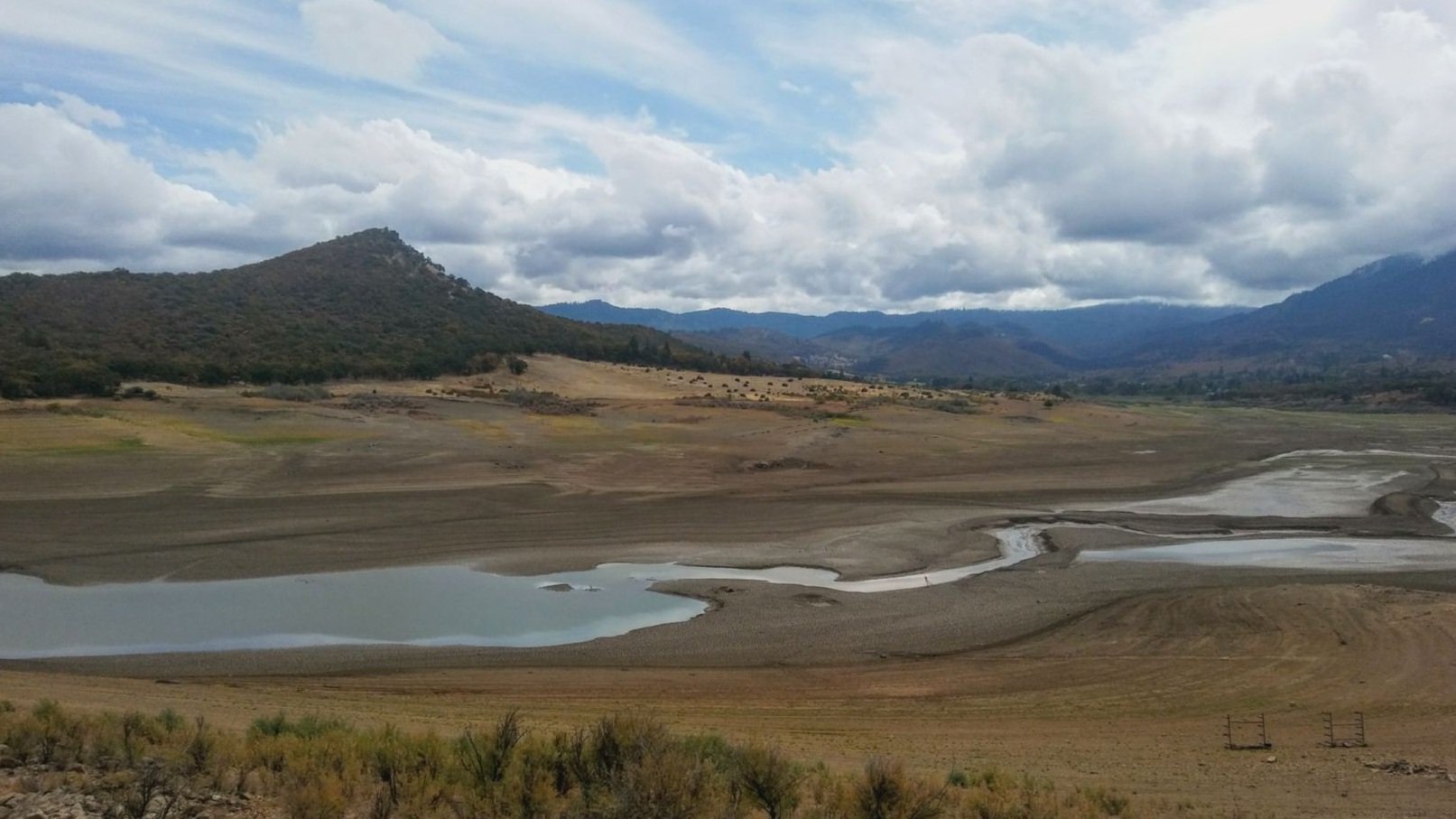Municipal Highlight: Another Dry Winter Brings Consequences for the Ashland Watershed
To achieve sustainability and climate resilience, we need to advocate for and participate in the development of water management, planning, policy, and law which addresses our regional issues and changing climate.
Water levels at Emigrant Lake, a reservoir in Ashland Oregon.
In a typical year, our water “bank” has received many deposits made with the help of regular storm cycles dropping precipitation on our landscape that is stored in the earth as groundwater, on the higher elevations as snow, and running off the surface into streams, rivers, lakes, and reservoirs. Much of the stored water has been manipulated by humans and is destined to be used for our own needs during the dry season. Current systems for water delivery and use in the Rogue basin were formed when there were fewer people in the basin, and climatic and weather cycles typically produced more water during the wet season than they do now. As conditions have changed, we need to look for short and long term solutions to create a sustainable and resilient water future.
The "teacup" diagram depicts current water levels of seven reservoirs, as well as flow measurements for key stream points in the Rogue Basin as of March 21, 2022. Photo from the Jackson County Watermaster.
It’s not news, but the extended drought and the record breaking dry spell we experienced this winter will have intense, deep effects this summer. Our basin’s municipal and irrigation water providers have some of the lowest reserves in the region. We were already down on our water bank from previous dry winters and this winter we again will be far from our storage capacity.
Generally, the City of Ashland relies exclusively on its own watershed for municipal water. The water originates on the northern slopes of Mt. Ashland, flows down Ashland Creek, and is stored in Reeder Reservoir. In the past, Ashland has often depended upon Talent Irrigation District (TID) water to supplement water from Reeder Reservoir, pumping the TID water to the drinking water treatment plant for processing and distribution. Ashland connected to the Medford Water Commission water sources in 2014 with the construction of the Talent, Ashland, Phoenix Intertie (TAP) Project. This connection was originally intended for emergency use only but in 2021, Ashland chose to use the TAP water instead of the TID water to supplement its municipal water source since the TID source was so limited. That will likely happen this year as well. To keep an eye on Ashland’s water picture, visit the City of Ashland’s water use dashboard to see data on Ashland water usage including Reeder reservoir levels, rainfall amounts, and drinking water plant inputs and production.
As part of short term adaptations to our water scarcity, residents of the Rogue basin can continue to evaluate their own water usage and reduce non-essential uses. In the parlance, this is called “curtailment” and all our water providers will no doubt be asking that of us this summer. Each user has to determine their own definition of “essential”, but the more we recognize the situation we are in, hopefully the more we all take action to protect and conserve the resources we have.
Local land use planning developments and decisions can also impact water resources. The smaller water resources like seeps, springs, and wetlands are discussed in a recent Rogue Riverkeeper blog and the protection of these resources are advocated for by both RRK and community groups. These smaller stores of water are an important part of our overall hydrologic system and it’s important that they remain protected and viable.
In the long term, the protection of water resources will come in many forms. Allocating water use is not as simple as turning a valve from one source to another user. Decades of water law and infrastructure determine who can use water from what sources and for what purpose. Oregon water law and legislation, as well as local land use all contribute to the sustainability of water resources in the Rogue basin.
Rogue Riverkeeper recently hosted a conversation with Jackson County Watermaster, Shavon Haynes. The Jackson County Watermaster is the local on-the-ground staff person for the middle and upper Rogue, representing Oregon Water Resources Department (OWRD) and managing water resources and implementing regulation.


